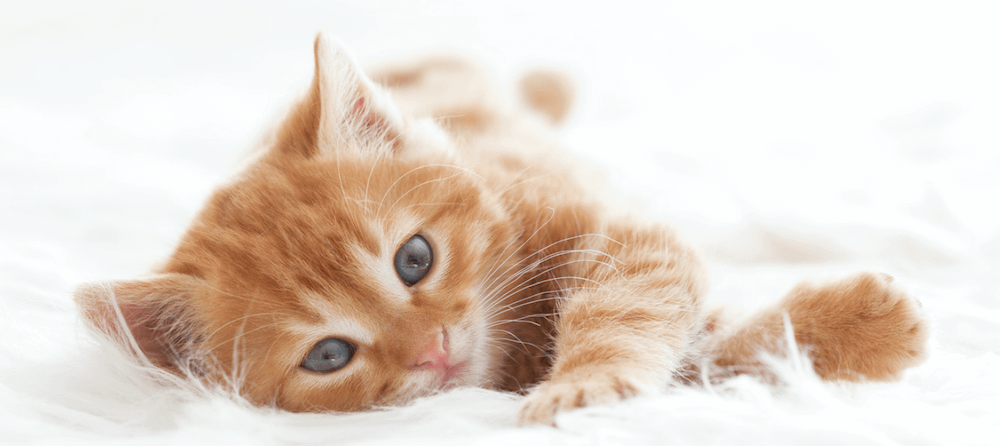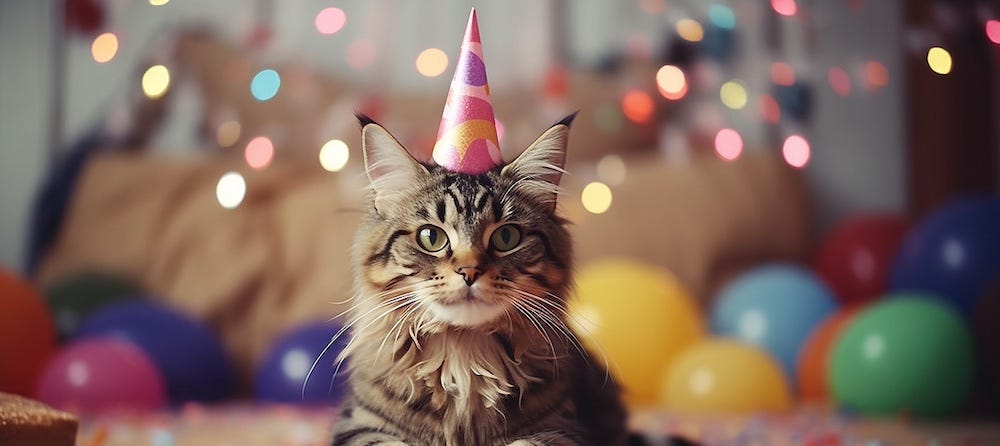Your fur baby will inevitably undergo some changes as they age. But if you weren’t there at birth, how can you tell how old a cat is? Knowing the age of your cat can be important for you to properly care for them. Let’s explore some tips on how to determine your cat's age. With recent increases in pet adoption, many pet parents might not know the age of their new kitty. Learning about a cat’s life stages can help you make a more accurate guess on your cat's age.
Cat life stages
There are a total of 4 stages of a cat's life. The stages include the following age ranges with some variation amongst professionals:
- Kitten: Birth - 6 months
- Adolescent cat: 7 months - 2 years
- Mature cat: 3 - 10 years
- Senior/geriatric cat: 10+ years
Lifespan of house cat vs feral cat
Did you know there is a major average lifespan difference between indoor house cats and outdoor feral cats? Feral cats typically live shorter lives than house cats, around 2-5 years. This is because they face much harsher living conditions like exposure to traffic, extreme temperatures, and predators, along with a constricted diet and lack of veterinary care. While house cats can enjoy the comforts of knowing where their next meal will come from and appropriate conditions, there is sometimes concern about weight gain. Some house cats can be overweight, which can lead to health concerns such as diabetes and mobility issues in the future. This could also impact their life expectancy.
How to tell how old a cat is
So how old is my cat? There are multiple ways to tell a cat's age from obvious size differences to more subtle criteria. Here are some characteristics to look for to help you estimate your cat's age.
Body changes
It is easy to tell a kitten from a cat. The cute little paws and tiny noses are sure ways to recognize a kitten. As cats get older, you will notice a change in their body. The body of adult cats will be a little less firm or less defined. As cats get older, they also tend to move less and might be less playful, resulting in a few more pounds.
Skin and fur
Skin and fur are also indicators of age. Kittens might have soft and smooth coats, whereas an older cat might have a thicker, more coarse coat. Younger cats like to spend a lot of time grooming their coat to keep it looking shiny. As a cat ages, this could change. Part of it could be a lack of interest and another part could be weight gain or even health issues. You might even notice some grey in your older cat's fur! It often proves difficult to use hair coat as a factor in estimating cat age without a history because you don’t know if those changes are secondary to trauma, a medical issue, or some other specific cause unique to that cat.
Tail
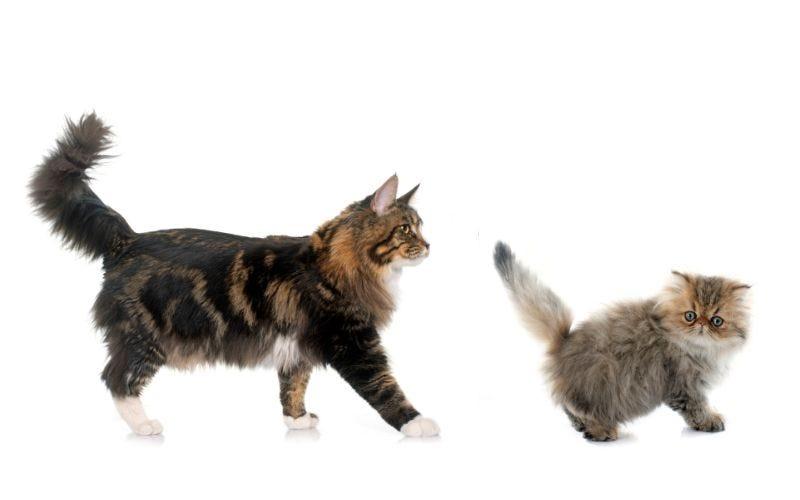
The tail of your cat grows with them and your cat usually stops growing around 2 years old. Keep an eye on their tail as a marker for how much growing they have left. Some cats are born without tails, with extremely short tails, and others may lose their tails due to a previous incident.
Teeth
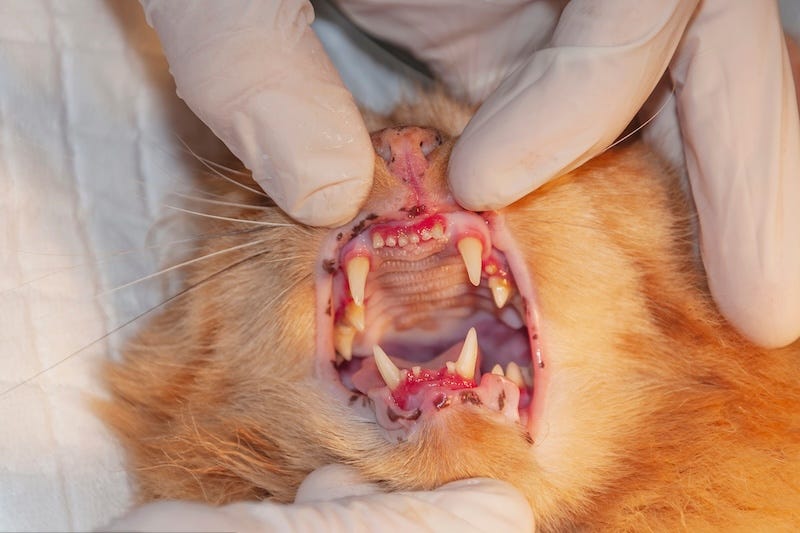
The most common and intricate method to determine how old a cat is is to take a closer look at their teeth. Analyzing your cat's teeth is usually the best way to get a more precise idea of a cat's age. Yes, kittens do have a set of baby teeth that fall out to make room for an adult set of teeth. Kittens usually don’t get all their teeth until around 6 months of age, and younger cats tend to have much whiter teeth. This is a helpful way to pinpoint the age of your kitten. You will likely notice increased wear and tartar build-up the older your cat gets. Veterinarians recommend that cats have their teeth professionally cleaned every 1-2 years depending on their age; so if you get your cat’s teeth cleaned or if you brush them at home, this method will be less accurate.
Here's how to tell a cat's age by teeth:
- Kittens (0 - 6 months): small, sharp, and clean teeth. Adult teeth will start coming in around 3-4 months
- Young Adult (7 months - 2 years): By the age of 6 months, cats will lose their baby teeth and have their adult teeth instead. Canines will be fully erupted.
- Adult (3 - 6 years): Full set of clean and white adult teeth. Minimal wear may be visible.
- Mature (7 - 10 years): Some wear on the teeth may be visible, teeth may be more yellow and there might be tartar buildup.
- Senior (11 years and older): Teeth may show significant wear, and there could be signs of dental disease, such as gingivitis or missing teeth.
Eyes
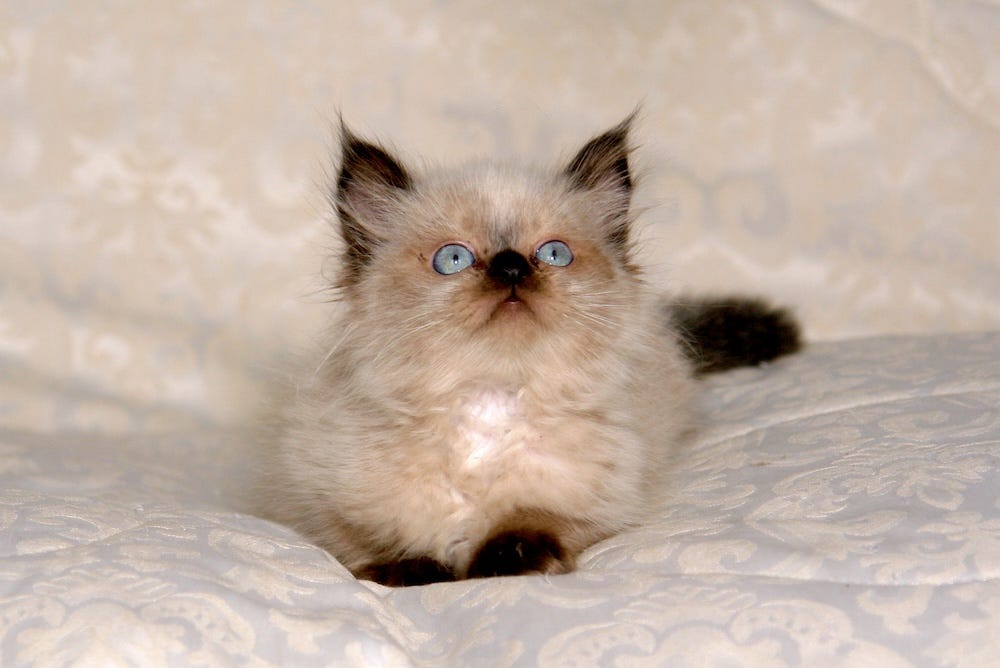
Looking into the gorgeous eyes of your fur baby, you might be able to see a little bit about their age. You might notice that your young cat has bright, beautiful eyes. As they get older, their eyes can actually get cloudy, this is called nuclear sclerosis and is a normal aging change that does not require treatment. However, not every cat's eyes cloud over—they can stay just as bright as their kitten years.
- Kittens: Young kittens have bright blue eyes that typically change color as they age.
- Adult cats: cats can have a variety of eye colors depending on their breed.
- Senior cats: older cats may start to develop a cloudiness in their eyes.
Hormonal changes
As early as 4-5 months of age, an unspayed female kitten might start going into heat. Some telltale signs to look for are:
- territorial marking
- mating calls
- wanting to escape outdoors
- spraying
If your kitten is an unaltered female and exhibiting these behaviors, it is safe to assume that she is around 5 months old. (And that it’s time to get her spayed!)
Mobility and activity levels
Remember when your sweet kitten loved to play and hop all around? As a cat gets older, this changes a bit naturally. Your older cat might want to spend more time sleeping instead of bouncing from counter to counter. It is still important to encourage your cat to be active.
As cats get older, they can start to develop issues with their mobility. In addition to scheduling an appointment with your veterinarian to get recommendations for supplements and possible medications to keep your aging cat as youthful as possible, a cat tower can encourage movement by providing multiple levels and climbing holes (while also being a stylish addition to your home). This tower can keep cats of all ages and activity levels interested and entertained.
Weight gain
Encouraging activity and exercise also helps combat cat weight gain. This might be a way to determine the age of your cat because older cats tend to carry more weight. As your cat gets older, they might choose to be less active and move a little slower. Your cat might prefer eating and lounging. Though you want to ensure they are eating the recommended amount, you might also want to be mindful of their intake based on age and weight. The Feeder-Robot allows you to customize your cat's food portions via the Whisker app. This can help with controlling and monitoring your cat's food intake.
Weight gain can also indicate a medical issue that needs to be addressed with your veterinarian. Regardless, 1-3 extra pounds on a cat is multiplied by 10 and then some in humans, so it is essential to get their weight back down to prevent undue stress on their joints.
Can you tell how old a cat is by its whiskers?
No, your cat's whiskers do not change as they age.
Is it normal for my cat to live beyond 15 years old?
The average life expectancy for an indoor cat is 10-15 years, but some cats live to age 20 or beyond! Keep in mind, 15 years old is about 76 years old in human years. Your cat might live beyond 15 years but it will depend on their environment, breed, and overall health.
You can help your cat achieve maximum life expectancy by providing them with great nutrition, exercise, regular vet appointments, and lots of love.
How can I take care of an aging cat?
Taking care of an aging cat involves addressing various aspects of their health and well-being. Here are some general guidelines for caring for an aging cat:
- Vet check-ups. Stay on top of vet appointments (twice yearly is recommended for senior cats)
- Accessibility. Make sure their food, water, and litter box is easily accessible. Consider adding ramps or steps for climbing onto furniture
- Senior food. Feed them senior-specific cat food that supports their changing nutritional needs
- Stay on top of hydration. Ensure your cat has access to fresh water at all times. Some older cats may be prone to dehydration, so it's essential to monitor their water intake
- Help them with grooming. Older cats may have difficulty grooming themselves, especially if they have arthritis
- Keep areas well-lit to prevent accidents
- Mental activity. Engage your cat in mental and physical activities to keep their mind sharp. Interactive toys, puzzle feeders, and play sessions can be beneficial.
- Joint pain. Consider joint supplements if your cat shows signs of arthritis or joint stiffness.
- Behavior monitoring. Keep an eye on changes in behavior, appetite, and litter box habits. Sudden changes may indicate underlying health issues that require veterinary attention.
- Sleeping habits. Make sure senior cats get enough sleep
Love your cat at any age
So, how can you tell how old a cat is? As your cat ages, you will notice changes in their physical appearance and behavior. It is important to tend to those changes and make adjustments to ensure your cat ages comfortably. It might start off as something simple as making sure they’re getting adequate exercise or providing easier access to their litter box.
As your fur baby ages, their litter habits might change. Litter-Robot 4 helps reduce cleaning and maintenance, as it is self-cleaning and automatic. It’s large enough to accommodate cats of all ages and keeps the bed of litter clean for every visit.
Cover photo by Sven Mieke on Unsplash
Sources:
- 2021 AAHA/AAFP Feline Life Stage Guidelines | American Animal Hospital Association
- Aging in Cats: Owner Observations and Clinical Finding in 206 Mature Cats at Enrolment to the Cat Prospective Aging and Welfare Study | NCBI
- Indoors or Outdoors? An International Exploration of Owner Demographics and Decision Making Associated with Lifestyle of Pet Cats | NCBI
- Cornell Feline Health Center | Cornell University College of Veterinary Medicine

